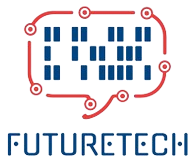
Imagine a world where everything you need is just a voice command away, where delivery drones zip through the sky, and where sustainable innovation fuels a thriving marketplace. This isn’t science fiction; it’s the future Amazon is actively shaping. Join us at the Amazon Panel: Shaping the Future, where industry leaders and visionaries will explore the cutting-edge technologies and groundbreaking initiatives that are transforming the way we live, shop, and connect.
Evolution of Amazon Panel
Amazon Panel has evolved significantly over the years, adapting to the ever-changing landscape of e-commerce and technological advancements. Initially, it began as a simple platform for online retail, offering a wide range of products to consumers worldwide. However, as the company grew and diversified its offerings, the Amazon Panel underwent various transformations to accommodate new features and services.
One significant evolution of the Amazon Panel is its expansion into cloud computing services with Amazon Web Services (AWS). AWS revolutionized the way businesses operate by providing scalable and cost-effective cloud solutions for storage, computing power, and other IT resources. This expansion diversified Amazon’s portfolio beyond e-commerce, positioning the company as a key player in the tech industry.
Technological Advancements
Technological advancements have played a pivotal role in shaping the trajectory of the Amazon Panel, propelling it to the forefront of the e-commerce and technology industries. Here’s a closer look at how cutting-edge technologies have influenced and transformed the Amazon Panel:
- Artificial Intelligence (AI) Integration:
- Implementation of AI algorithms for personalized product recommendations.
- Integration of AI-driven chatbots for enhanced customer support.
- Utilization of machine learning for predictive analytics, optimizing inventory management.
- Augmented Reality (AR) in Shopping:
- Introduction of AR features for virtual product trials and visualization.
- Integration of AR technology in the Amazon app for a more immersive shopping experience.
- Enhanced product listings with AR-generated content, providing customers with a closer look at items before purchase.
- Voice-Activated Commerce:
- Development and integration of Amazon’s virtual assistant, Alexa.
- Expansion of voice-activated shopping capabilities, allowing users to make purchases using voice commands.
- Integration of Alexa into smart devices, creating a seamless and interconnected shopping ecosystem.
- Robotics in Warehousing:
- Deployment of robotic systems in Amazon’s fulfillment centers for efficient order picking and packing.
- Integration of autonomous robots to transport goods within warehouses, reducing operational time and increasing efficiency.
- Continued investment in robotic technologies to optimize supply chain processes.
- Blockchain for Supply Chain Transparency:
- Implementation of blockchain technology to enhance transparency in the supply chain.
- Improved traceability of products from manufacturing to delivery, ensuring authenticity.
- Increased security and reduced fraud in the supply chain through decentralized ledger technology.
These technological advancements underscore Amazon Panel’s commitment to innovation, providing customers with a seamless and futuristic shopping experience. As technology continues to advance, it’s evident that Amazon will remain at the forefront, continually integrating cutting-edge solutions to shape the future of e-commerce.
Economic Implications
The evolution of the Amazon Panel has brought about a significant shift in consumer behavior, influencing how people shop and interact with online platforms. With the convenience of one-click purchases, fast shipping options, and a vast product selection, consumers are increasingly turning to Amazon as their go-to online marketplace. This shift has not only impacted traditional brick-and-mortar retailers but has also shaped the expectations of consumers regarding the speed, convenience, and variety of products available in the digital retail space.
Marketplace Dynamics and Competition
The economic implications of Amazon’s evolution extend beyond consumer behavior to impact the dynamics of the overall marketplace. Amazon’s dominance in the e-commerce sector has led to increased competition and prompted other retailers to enhance their online presence. The rise of third-party sellers on the Amazon platform has created a dynamic marketplace where small businesses can thrive, but it has also raised questions about market concentration and competition in the e-commerce space. As Amazon continues to innovate and expand its offerings, its economic influence is likely to reshape the competitive landscape of the retail industry on a global scale.
Environmental Sustainability
As the Amazon Panel has evolved, the company has recognized the importance of environmental sustainability, leading to various initiatives aimed at minimizing its ecological impact. These efforts not only reflect a commitment to corporate responsibility but also acknowledge the role businesses play in addressing environmental challenges.
Green Energy Initiatives:
- Implementation of renewable energy sources, including solar and wind power, to reduce the carbon footprint of Amazon’s operations.
- Ongoing commitment to achieving 100% renewable energy usage across Amazon’s global infrastructure.
- Investment in innovative energy solutions to promote sustainable practices within the company.
Carbon Neutral Shipping:
- Introduction of the Shipment Zero initiative, aiming to make all Amazon shipments net-zero carbon, with the goal of reaching 50% by 2030.
- Incorporation of electric delivery vehicles and the advancement of sustainable packaging to minimize the environmental impact of shipping.
- Continuous research and development into eco-friendly transportation methods for last-mile delivery.
Waste Reduction and Recycling:
- Implementation of programs to reduce waste in Amazon’s operations, focusing on recycling and minimizing single-use packaging.
- Commitment to making packaging fully recyclable and promoting responsible disposal practices among customers.
- Development of innovative packaging solutions, such as the “Frustration-Free Packaging” initiative, aimed at reducing waste and promoting recyclability.
Amazon Panel’s commitment to environmental sustainability reflects a growing awareness of the impact of business operations on the planet. By implementing these initiatives, Amazon strives not only to meet its own sustainability goals but also to set an example for the broader e-commerce industry. The continuous evolution of these practices underscores Amazon’s dedication to minimizing its environmental footprint and contributing to a more sustainable future.
User Interface and Experience
| Aspects | Earlier Stages | Current Innovations |
| Design Elements | Basic layout with minimal aesthetics | Modern, intuitive design with enhanced user experience |
| Navigation | Simple menus and limited search features | Advanced search algorithms, personalized recommendations, and intuitive navigation |
| Mobile Responsiveness | Limited mobile optimization | Mobile-first design, ensuring seamless user experience across devices |
As the Amazon Panel has evolved, one of the focal points has been enhancing the user interface and overall experience. The journey from basic layouts to modern, intuitive designs reflects a commitment to meeting user expectations and adapting to changing technological landscapes.
- Design Elements: In its earlier stages, the Amazon Panel featured a basic layout with minimal aesthetics. However, in response to the growing demand for visually appealing and user-friendly interfaces, the design has undergone a significant transformation. The current interface boasts modern and intuitive design elements, offering users a more engaging and aesthetically pleasing shopping experience. This evolution aligns with the contemporary emphasis on the visual aspect of online platforms and the recognition of design’s impact on user satisfaction.
- Navigation: The evolution of the Amazon Panel’s navigation is particularly notable. In its earlier stages, the platform had simple menus and limited search features. Over time, Amazon has invested in advanced search algorithms, personalized recommendations, and intuitive navigation, making it easier for users to find what they’re looking for. The emphasis on user-friendly navigation aligns with the increasing expectations of consumers for efficient and personalized online experiences.
- Mobile Responsiveness: In the initial stages, the mobile version of the Amazon Panel had limited optimization, reflecting a time when mobile shopping was not as prevalent. However, with the rise of mobile device usage, Amazon has transitioned to a mobile-first design approach. This ensures a seamless user experience across devices, accommodating the shift in consumer behavior towards mobile-centric interactions. The optimization for mobile devices reflects Amazon’s commitment to adapting to changing technological trends and meeting users where they are.
In summary, the evolution of the Amazon Panel’s user interface and experience showcases a progression from basic designs to sophisticated, user-centric interfaces. By continually investing in design elements, navigation features, and mobile responsiveness, Amazon aims to provide a seamless and enjoyable experience for users, reflecting its dedication to staying at the forefront of

